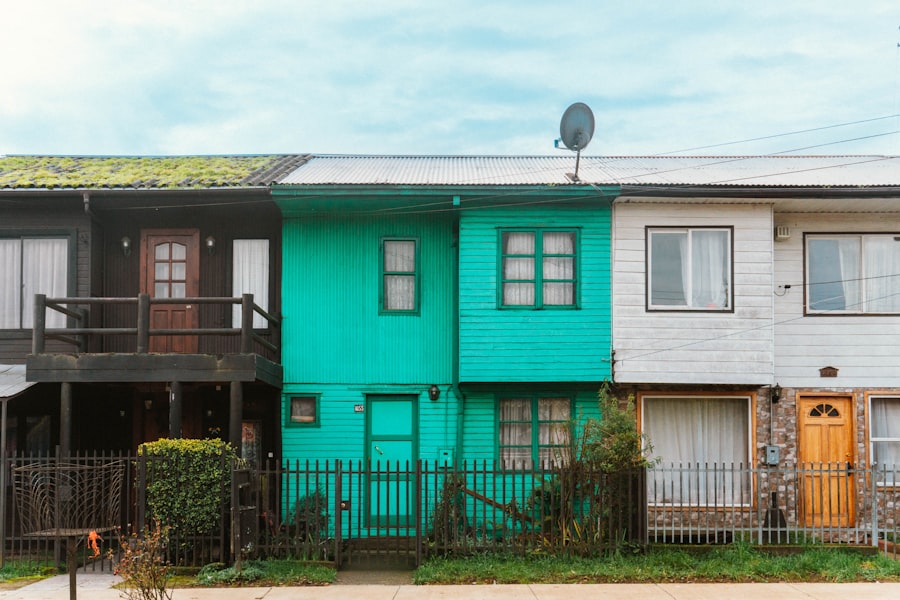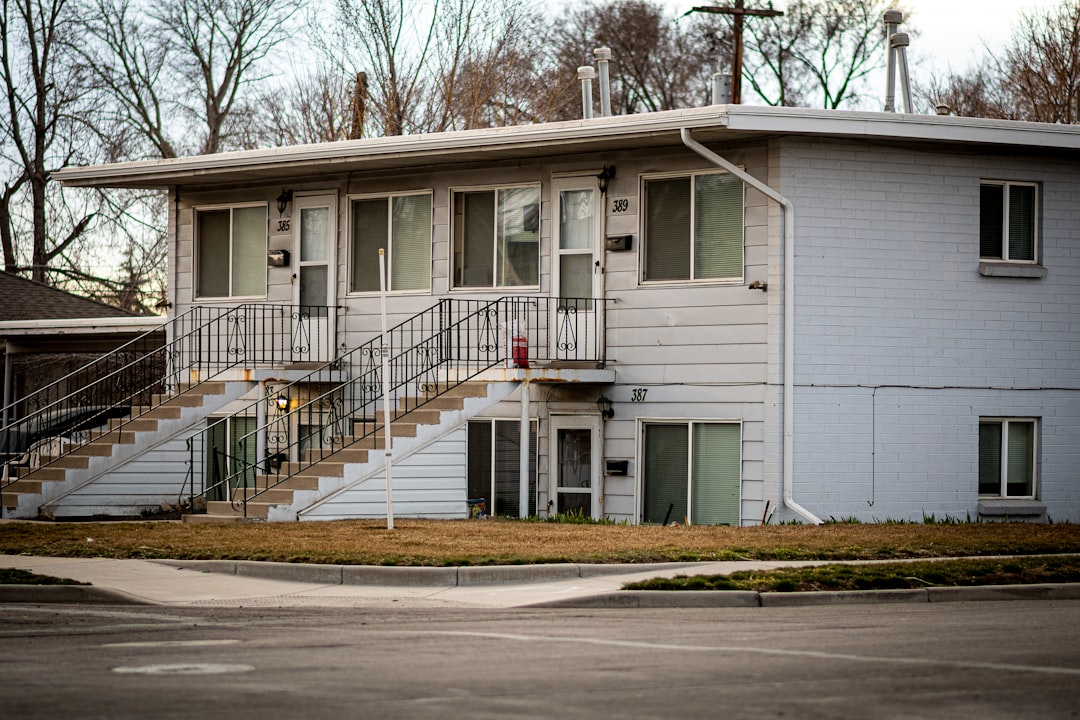Housing affordability is a pressing issue that affects millions of individuals and families across the globe. As you navigate the complexities of modern life, you may find that the dream of homeownership or even renting a suitable place is becoming increasingly elusive. The concept of housing affordability encompasses not just the price of homes or rents, but also the broader economic landscape that influences these costs.
It is a multifaceted problem that intertwines with various social, economic, and political factors, making it a critical topic for discussion and action. In recent years, the conversation around housing affordability has gained momentum, as more people recognize its implications on quality of life, community stability, and economic mobility. You may have noticed that rising housing costs can lead to increased financial strain, forcing individuals to allocate a larger portion of their income to housing expenses.
This situation can create a ripple effect, impacting everything from health and education to job opportunities and social cohesion. Understanding the underlying causes of housing affordability challenges is essential for finding effective solutions that can benefit everyone.
Key Takeaways
- Housing affordability is a pressing issue that affects many individuals and families.
- Limited supply of housing contributes to the affordability crisis, driving up prices and making it difficult for people to find affordable homes.
- High demand for housing, especially in urban areas, further exacerbates the affordability problem.
- Economic inequality plays a significant role in housing affordability, as low-income individuals and families struggle to find affordable housing options.
- Government policies can have a significant impact on housing affordability, and there is a need for effective and targeted interventions to address the issue.
Limited Supply of Housing
One of the primary factors contributing to housing affordability issues is the limited supply of available housing. As you explore your local real estate market, you might observe that the number of homes for sale or rent often falls short of demand. This scarcity can be attributed to various factors, including a lack of new construction, zoning restrictions, and the slow pace of development in many areas.
When the supply of housing does not keep up with demand, prices inevitably rise, making it increasingly difficult for you and others to find affordable options. Moreover, the limited supply is often exacerbated by the increasing costs associated with construction and land acquisition. As you consider the challenges faced by developers, you may realize that rising material costs and labor shortages can hinder their ability to build new homes.
Additionally, many regions have stringent regulations that can delay or complicate the development process. This combination of factors creates a perfect storm for housing shortages, leaving you and countless others in search of affordable living arrangements.
High Demand for Housing

In contrast to the limited supply, high demand for housing further complicates the affordability crisis. As urban areas continue to grow and attract new residents, you may find that more people are competing for a finite number of homes.
As cities become more desirable places to live, the demand for housing in these areas skyrockets, leading to increased competition and higher prices. You might also consider how changing societal norms influence housing demand. For instance, younger generations are increasingly prioritizing urban living and seeking proximity to amenities such as public transportation, entertainment, and employment opportunities.
This shift in preferences can create additional pressure on already strained housing markets. As demand continues to outpace supply, it becomes increasingly challenging for you and others to secure affordable housing options.
Economic Inequality and Housing Affordability
| Country | Gini Coefficient | Median House Price | Average Income |
|---|---|---|---|
| United States | 0.41 | 250,000 | 60,000 |
| United Kingdom | 0.34 | 300,000 | 50,000 |
| Canada | 0.32 | 350,000 | 55,000 |
Economic inequality plays a significant role in shaping housing affordability challenges. As you reflect on your own financial situation, you may recognize that disparities in income and wealth distribution can directly impact your ability to afford housing. In many regions, wages have not kept pace with rising housing costs, leaving individuals and families struggling to make ends meet.
This growing divide can lead to a cycle of poverty that is difficult to escape. Furthermore, economic inequality often manifests in geographic disparities as well. You may notice that certain neighborhoods or regions experience rapid gentrification while others remain stagnant or decline.
This uneven development can exacerbate existing inequalities, as wealthier individuals move into lower-income areas, driving up property values and rents. As a result, long-time residents may find themselves priced out of their own communities, further highlighting the urgent need for solutions to address these disparities.
Government Policies and Housing Affordability
Government policies play a crucial role in shaping the landscape of housing affordability. As you engage with local or national policy discussions, you may find that various regulations and initiatives can either alleviate or exacerbate housing challenges. For instance, policies aimed at promoting affordable housing development can help increase supply and provide more options for individuals like yourself who are struggling to find suitable living arrangements.
However, not all government interventions are effective or equitable. You might encounter policies that inadvertently contribute to rising costs or limit access to affordable housing. For example, restrictive zoning laws can hinder new construction in desirable areas, while tax incentives for developers may not always translate into lower rents for tenants.
Understanding the complexities of these policies is essential for advocating for changes that promote greater housing affordability.
Gentrification and Displacement

Gentrification is another critical factor influencing housing affordability in urban areas. As neighborhoods undergo revitalization and attract new investment, you may witness an influx of wealthier residents who drive up property values and rents. While this process can bring positive changes such as improved infrastructure and amenities, it often comes at a steep cost for long-time residents who may be displaced from their homes.
The displacement caused by gentrification can have profound effects on communities. You might consider how losing access to affordable housing can disrupt social networks and cultural ties that have developed over generations. As neighborhoods change rapidly, long-standing residents may struggle to find new homes within their communities or face increased commuting times if they are forced to relocate further away.
Addressing the challenges posed by gentrification requires thoughtful policies that balance development with the needs of existing residents.
Urban Sprawl and Housing Affordability
Urban sprawl is another phenomenon that impacts housing affordability in significant ways. As cities expand outward into surrounding areas, you may notice that new developments often prioritize single-family homes over multi-family units or affordable housing options. This trend can lead to increased reliance on automobiles and longer commutes, which can further strain your budget as transportation costs rise.
Additionally, urban sprawl can contribute to environmental degradation and loss of green spaces. As you consider the implications of sprawling development patterns, you might recognize that they often exacerbate social inequalities by pushing low-income residents further away from job centers and essential services. Addressing urban sprawl requires a comprehensive approach that prioritizes sustainable development while ensuring access to affordable housing for all residents.
Zoning and Land Use Regulations
Zoning and land use regulations are critical components of the housing landscape that can significantly influence affordability. As you delve into local zoning laws, you may discover that they often dictate what types of housing can be built in specific areas. These regulations can create barriers to affordable housing development by limiting density or imposing costly requirements on developers.
You might also consider how outdated zoning practices can perpetuate segregation and inequality within communities. For instance, restrictive zoning laws may prevent the construction of multi-family units in predominantly single-family neighborhoods, effectively excluding lower-income families from accessing desirable areas. Reforming zoning regulations is essential for promoting greater inclusivity and ensuring that affordable housing options are available to all residents.
Lack of Affordable Housing Development
The lack of affordable housing development is a significant barrier to addressing housing affordability challenges. As you explore your community’s housing landscape, you may find that there are few options available for low- and moderate-income individuals and families. This shortage can be attributed to various factors, including rising construction costs, limited funding for affordable projects, and regulatory hurdles that discourage developers from pursuing such initiatives.
Moreover, you might notice that many existing affordable units are at risk of being lost due to disrepair or conversion into market-rate properties. As these units disappear from the market, the pressure on remaining affordable options intensifies, making it even more challenging for you and others to secure stable housing. Addressing this issue requires concerted efforts from both public and private sectors to incentivize affordable housing development and preserve existing units.
Speculation and Housing Affordability
Speculation in real estate markets can also have detrimental effects on housing affordability.
This practice can drive up prices in neighborhoods where investors seek to capitalize on rising demand, making it increasingly difficult for local residents to compete.
The impact of speculation extends beyond individual buyers; it can also destabilize entire communities as rapid price fluctuations create uncertainty in the market. You might find yourself grappling with the consequences of this volatility as it affects your ability to plan for the future or secure stable housing arrangements. Addressing speculation requires thoughtful policies aimed at curbing excessive investment while promoting sustainable growth in local real estate markets.
Solutions to Housing Affordability
Finding effective solutions to housing affordability challenges requires a multifaceted approach that addresses both supply and demand issues. As you engage with this complex problem, you may consider advocating for policies that promote affordable housing development through incentives for builders or streamlined permitting processes. By encouraging the construction of diverse housing types—such as multi-family units or co-housing arrangements—you can help increase options for individuals seeking affordable living arrangements.
Additionally, supporting community land trusts or nonprofit organizations focused on preserving affordable housing can be an effective way to combat displacement caused by gentrification. These initiatives often prioritize long-term affordability by removing properties from the speculative market and ensuring they remain accessible to low- and moderate-income residents. Ultimately, addressing housing affordability requires collaboration among various stakeholders—including government agencies, developers, community organizations, and residents like yourself—to create sustainable solutions that benefit everyone involved.
By engaging in conversations about these issues and advocating for change within your community, you can play an active role in shaping a more equitable future for all residents seeking safe and affordable housing options.
In exploring the systemic reasons for housing unaffordability, it’s crucial to consider the broader economic and policy factors that contribute to this pressing issue. An insightful article on this topic can be found on How Wealth Grows, which delves into the intricate dynamics of wealth distribution and its impact on housing markets. The article discusses how economic policies, investment trends, and income disparities play significant roles in shaping housing affordability. For a deeper understanding, you can read more about these systemic factors in the article available at How Wealth Grows.
WATCH NOW!🫢 Your Rent Is Rigged By Wall Street
FAQs
What are systemic reasons for housing unaffordability?
Systemic reasons for housing unaffordability include factors such as limited housing supply, increasing land and construction costs, and government regulations and zoning restrictions.
How does limited housing supply contribute to housing unaffordability?
Limited housing supply can contribute to housing unaffordability by creating a situation where demand exceeds supply, leading to higher prices and bidding wars for available properties.
What role do increasing land and construction costs play in housing unaffordability?
Increasing land and construction costs can drive up the overall cost of building new homes, making it more expensive for developers to create affordable housing options and leading to higher prices for buyers and renters.
How do government regulations and zoning restrictions impact housing affordability?
Government regulations and zoning restrictions can limit the ability to build new housing, leading to a shortage of available properties and driving up prices. These regulations can also impact the types of housing that can be built, limiting options for affordable housing.
